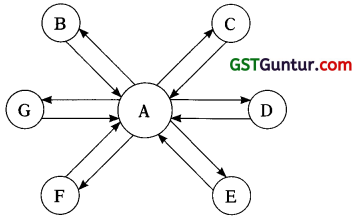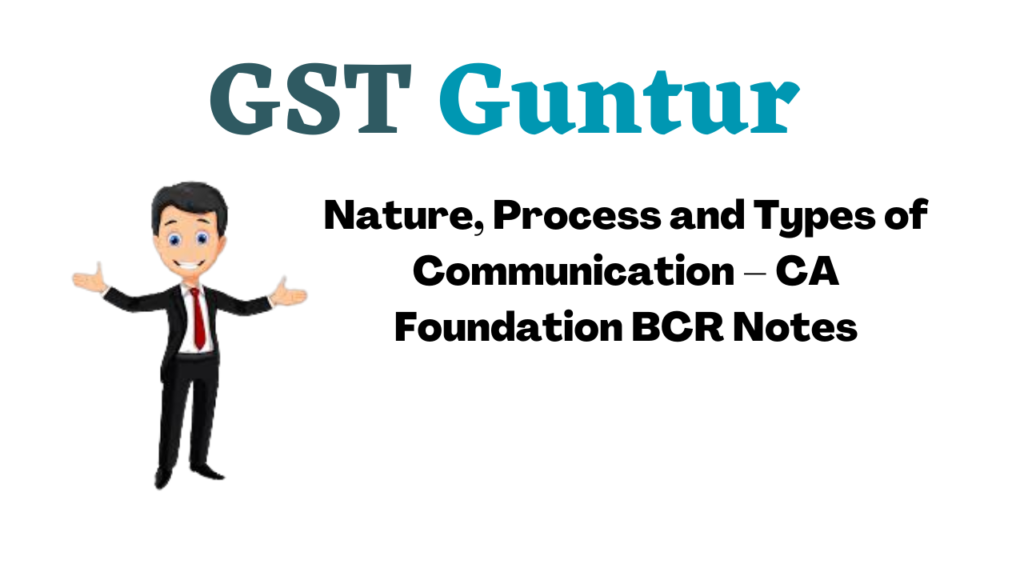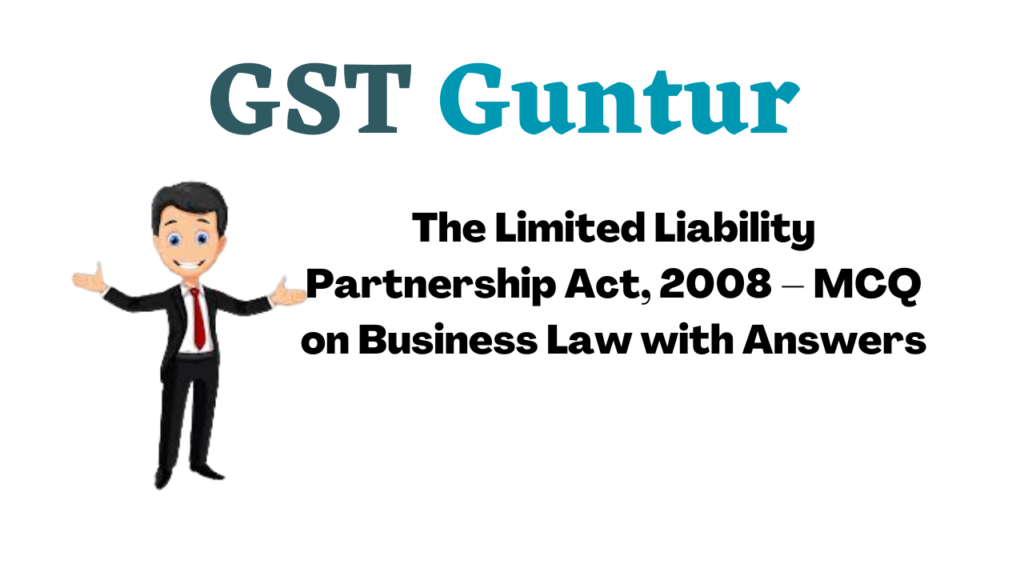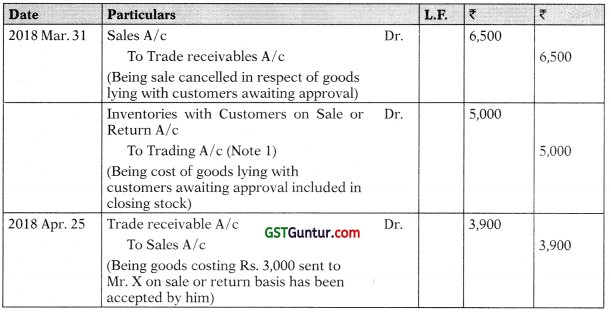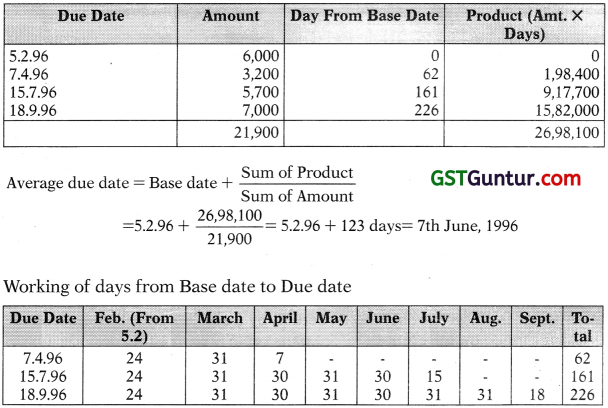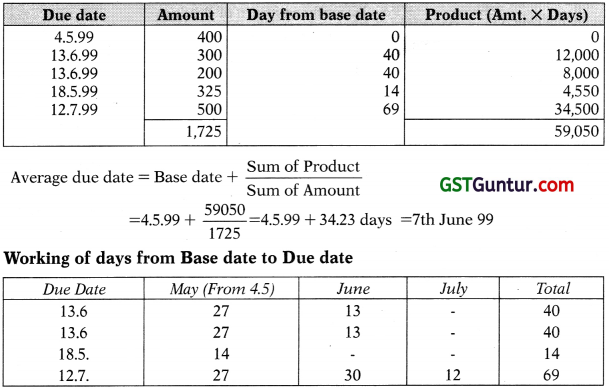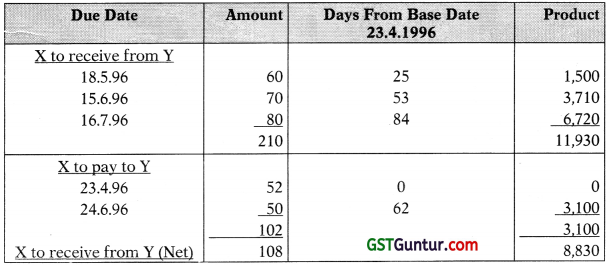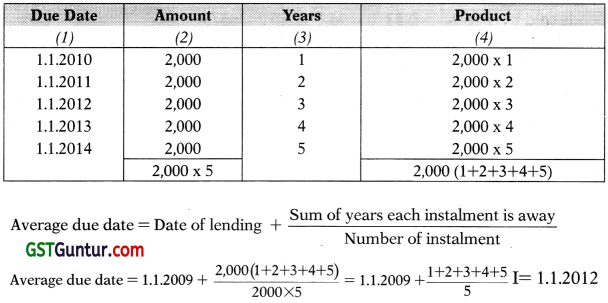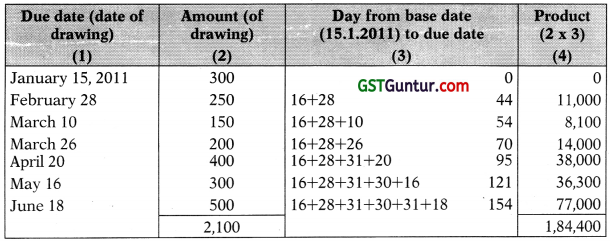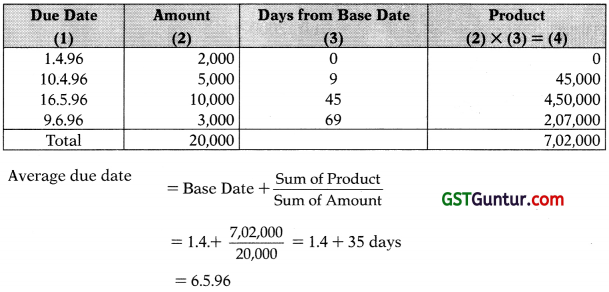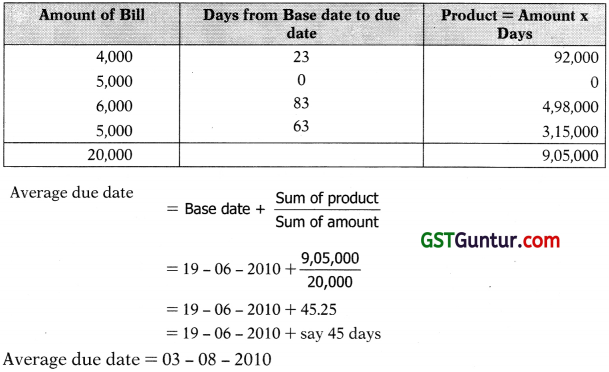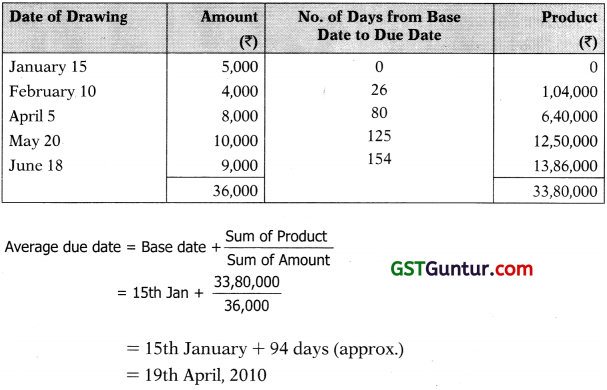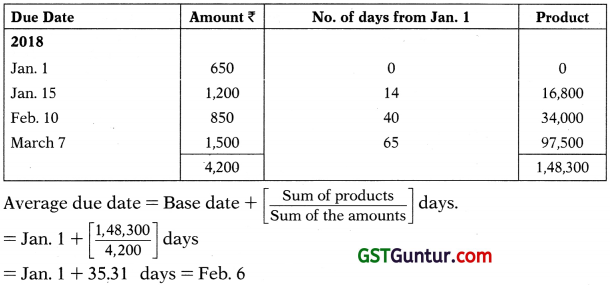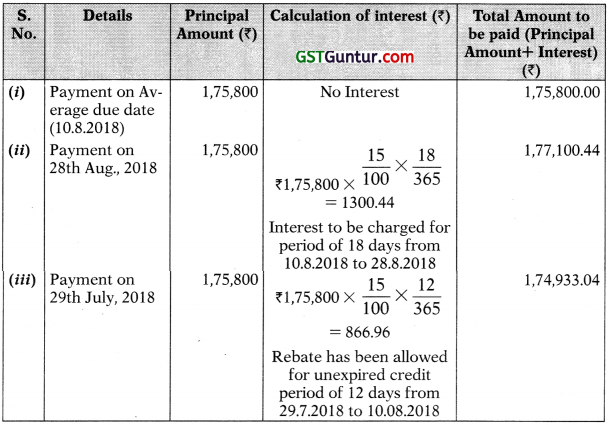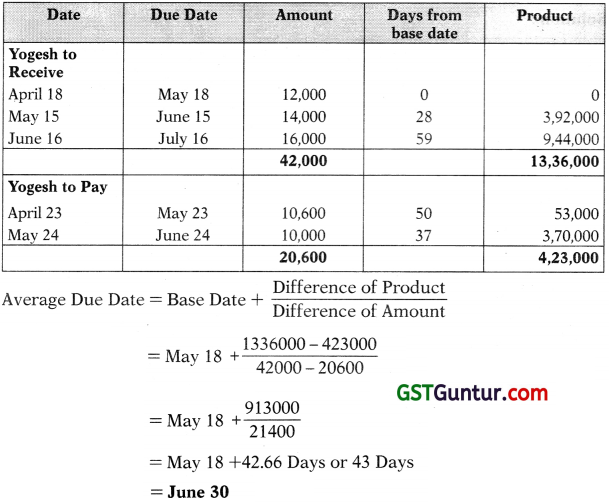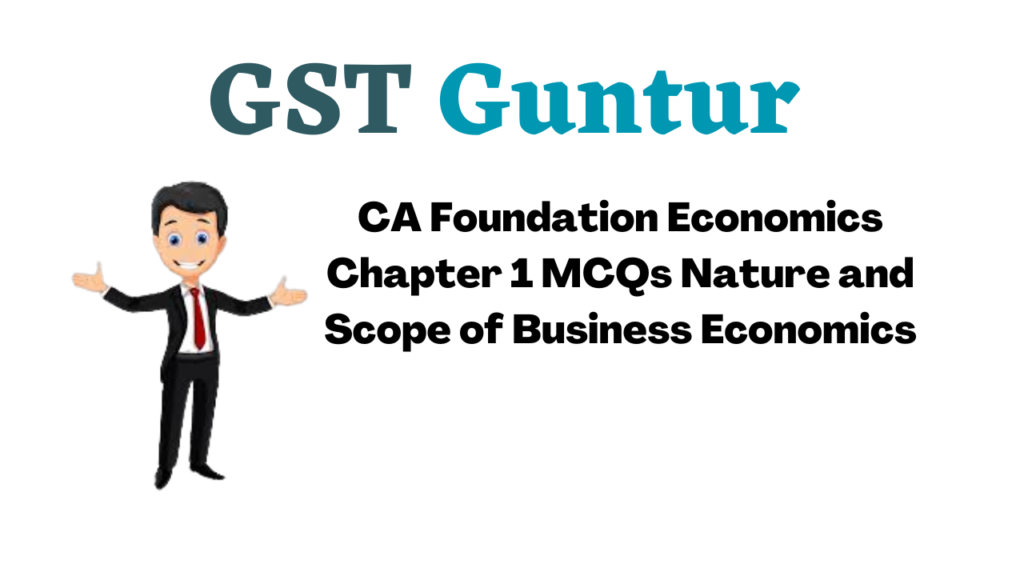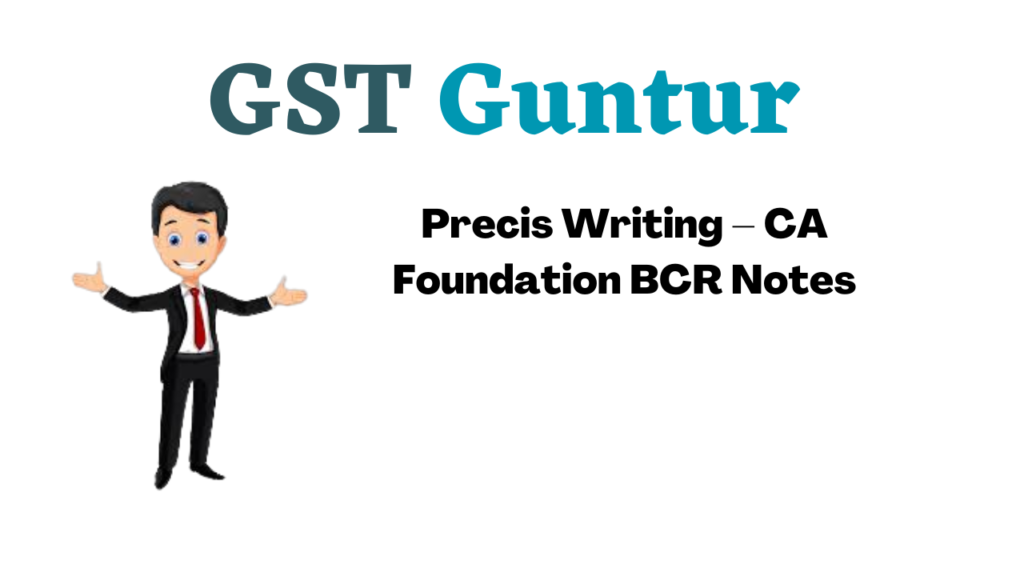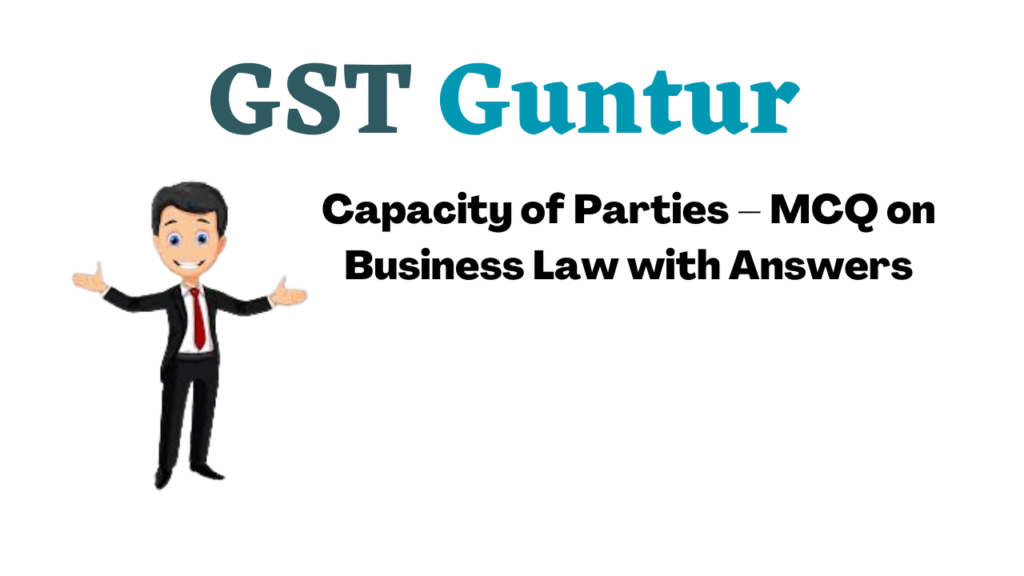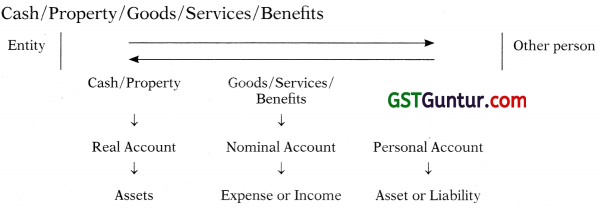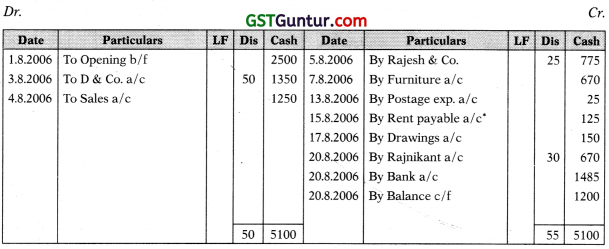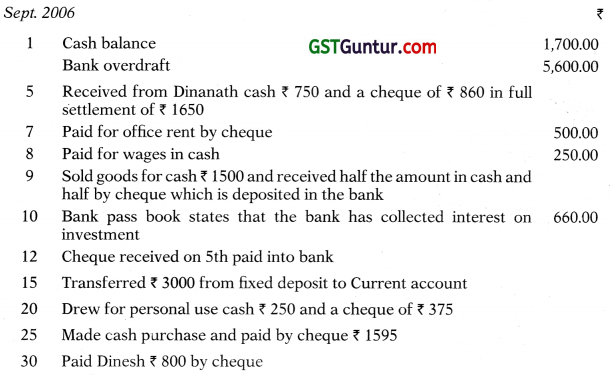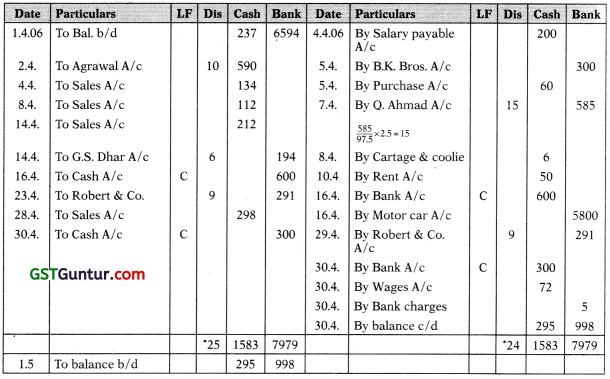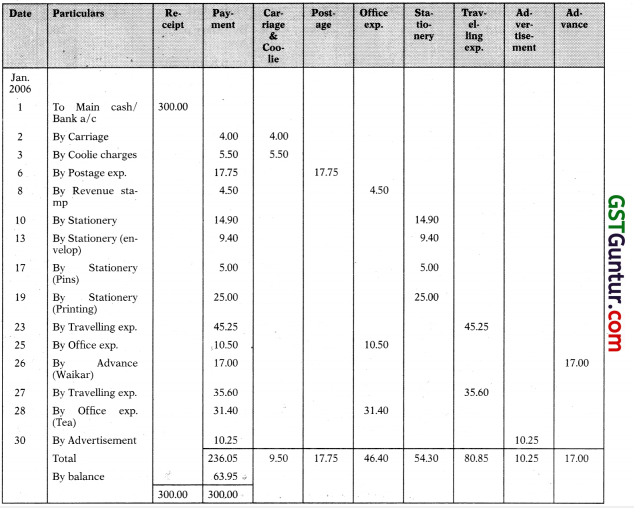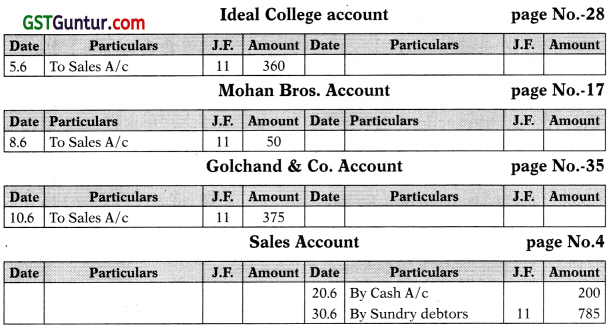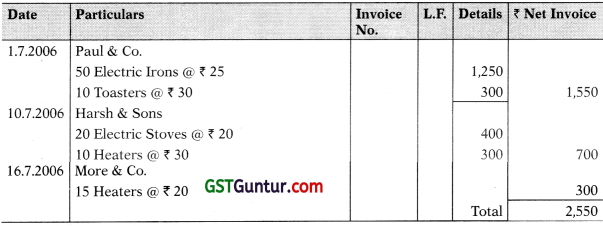Browsing through Precis Writing – CA Foundation BCR Notes Pdf help students to revise the complete subject quickly.
Precis Writing – BCR Notes CA Foundation
In today’s fast paced and technology driven world, the art of summarising and abstracting has become crucial. This skill helps to save time and facilitates effective communication. This skill is useful in writing synopses, executive summaries, and abstracts which are essential elements of technical writing. The art of summarising is also known as precis writing.
On many occasions, we need a summery of detailed information. Therefore, it is important to know how to summarise information without distorting the meaning.

Meaning of A Precis:
A precis or summary is a shortened version of lengthy matter. It provides a short but accurate account of the original information. It is concise statement of the substance of a longer passage in the precis in own words. A precis must be brief, accurate and clear. Is is about one-third of the original matter. A precis is really a re-statement of the main ideas in a short and clear form. It does not copy words and sentences of the original passage.
The words ‘precis’ and ‘summary’ are used interchangeably. But there is one difference between them. A precis is in the form of a paragraph. But a summary can also be in the form of notes with just headings and sub-headings and numbered points under them.
Thus, a precis is an abridgement of the original passage. An ‘abstract’ is a summary constructed by extracting the key sentences of a paragraph and putting them together in a coherent format.
There are three essentials (A, B, C) of a good precis:
- A – Accurate
- B – Brief
- C – Clear
A precis means an abridged form of a piece of writing. Precis writing involves summarizing a document to convey the information in few words, It does not merely involving para phrasing (writing in one’s own words) from the original text. The precis or the summary must ‘stand alone’ and make sense. There is no fixed length prescribed for a precis. It is usually written in one third of the number of words in the original passage. A precis is not the reproduction of important sentences in the original passage.
Need And Importance of A Precis:
At several occasions we require a short and concise version of some lengthy material such as an article, a report, etc. These days, people have to attend to a variety of jobs. They do not have enough time to go into all the details of documents, etc. They want to know the essence of a matter as briefly and clearly as possible. For example, a finance manager may like to know the main points of the budget. His secretary is expected to prepare a summary or precis of the Finance Minister’s budget.
Similarly, a sales manager may want to know the main points of the company’s correspondence with a client. A trade union leader may have to report to the workers what happened in his meeting with the human resource manager of the company. In each of these situations a precis has to be prepared. A good precis helps to save the valuable time of busy executives, bureaucrats and politicians.

Steps In Precis Writing:
Precis writing involves the following steps:
1. Identify the Reader and Purpose of the Precis: This step will determine how much detail to include and how formal the precis should be. For example the executive summary of a formal report has to be more formal them the precis from a text book chapter for study purpose.
2. Understand the Passage: First of all read the passage thoroughly to properly understand its meaning. You may have to read the passage more than once to get a general idea of its theme. You cannot summarise the original matter without understanding it. In the absence of a thorough reading you will not be able to recognise what it is all about or appreciate its theme and arguments given in it.
3. Recognise the Essential Points: After understanding the passage, recognise the essential points and underline them. Irrelevant or non essential points are to be ignored or dismissed. You must avoid repetitions, digressions, examples, idiomatic expressions and jargon.
4. Select the Title: A suitable title that sums up the theme of the passage is selected. The title can be a word, phrase or even a short sentence. But it must reflect the central idea of the passage.
5. Rewrite the essential points: The main points of the passage selected in step 2 are to be written in fewer words and in your own language. For this purpose you require an extensive vocabulary. Only then you can convey the exact meaning of a whole sentence or paragraph in a few words. Compare your points with the passage to ensure that no important points are left out and nothing insignificant is included. The ideas in the precis must be presented in logical and concise manner. Considerable language skill is required for expressing idea in short and direct style.
6. Prepare a Draft: Write a draft using your points. The draft should be in the form of a well-connected and readable paragraph containing the sum and substance of the original. You need the ability to write a coherent piece of English prose. The facts should be presented in a logical sequence and the language used needs to be concise. A passage of a narrative passage is always written in reported speech and in the past tense.
It does not include conversations, questions or exclamations. You are not supposed to change the line of arguments or insert any facts not included in the original even if you do not agree with them. There is absolutely no scope for your personal views in a precis. Use only the third person and indirect speech. Eliminate any repetitions or irrelevant details. No personal comments should be included.
7. Review and Edit: Check the draft to ensure that it is clear, concise, readable and about one third of the original material. The meaning and intent of the passage must be retained in your draft. Re-phrase your rough draft wherever desirable. You may reconsider and modify the title, if necessary.

Guidelines For Precis Writing:
Precis writing is not a mechanical process but an intellectual and methodical exercise. It cannot be done by merely omitting words and sentences from,the original passage. A precis must be a good piece of composition.
Precis writing is an art that can be mastered only with practice. However, the following points can be helpful in writing a precis:
(i) Find out the Central Idea:
It is very important to determine the central idea or theme of the passage. A thorough understanding of the passage is necessary for this purpose. While analysing the passage the major points can be determined only with reference to the theme of the passage.
(ii) Be Brief but Clear:
Brevity is the soul of summarising. But brevity should not be at the cost of clarity. If the retention or addition of a few words makes the precis clear, they should be included to avoid ambiguity. Use of words in place of phrases, avoidance of repetition, omission of examples and comparison will help to ensure brevity.
(iii) Do not Reproduce, Remodel:
Prices writing is not the art of selection and deletion, it is the art of remodelling. Instead of reproducing a few important sentences and deleting others, prepare the abridged version of the original.
(iv) Use your Own Language:
Summary should, as for as possible, be written in your own words.
(v) Make it Intelligible:
Your precis should be intelligible even to a person who has not read the original passage.
(vi) Write in the Third Person:
Avoid the use of direct speech in your summary. The use of indirect speech will make your precis more compact. Impersonal style should be used.
(vii) Reduce the Passage to One-third:
Unless otherwise indicated, the precis should be one-third of original passage.
(viii) Observe Proportion:
Your summary should be well-proportioned. Each part of the original passage should be summed up according to its relative importance rather than according to the space assigned to it. All the main ideas in the passage should be given equal treatment in the precis.
Essential Qualities of A Good Precis:
A good precis must contain the following qualities –
1. Clarity: A good precis must have clarity of expression. It must be easy to read and intelligible to even those readers who have not read the original passage. It must be free from ambiguity and circumlocution.
2. Completeness : A good precis contains all the essential points of the original passage. No important fact or idea is left out. The precis is complete and informative.
3. Compactness : There must be unity among the words and sentences used in a precis. All the ideas reproduced from the original passage must form a compact whole.
4. Conciseness : All the essential ideas in the precis must be stated in brief. There must be no repetition or ornamental phrases, unessential details. However, conciseness should not be achieved at the cost of clarity.
5. Coherence: A precis should not be a collection of disjointed sentences. All sentences and ideas in the precis should be well connected and follow a logical order.

Tips For Condensation:
1. Avoid redundancy – “The movie was entertaining” is better than “The movie was thoroughly and wholly entertaining.”
2. Avoid circumlocution – example “The workers were upset because their boss was angry with them” rather than. “The reason why the workers were so upset was because their boss was angry with them”.
3. Avoid wordiness – example “The chairman’s proposal was adopted with the full agreement of all the members of the Board of directors” should be replaced by “The members unanimously adopted the chairman’s proposal.”
4. Avoid passive voice – example “After the pacemaker was fitted a series of problems were faced by the patient is longer than “The patient faced a series of problems with the pacemaker.”
5. Use words in place of phrases and phrases in place of clauses.
6. Use one word substitutions.
7. Link various sentences.
8. Avoid all unnecessary repetitions.
9. Delete example, comparisons digressions and needless details.
Illustration 1:
Precis writing is a step by step exercise. Let us, therefore, illustrate as follows:
Brazil is noted for being the world’s largest coffee exporter. But the Brazilian economy does not grow and thrive on coffee exports alone. In 1981 more than half of Brazil’s 23 billion U.S. dollars in exports consisted of industrial products and sophisticated services. Compare this with 1970 when exports totalled a mere 2.75 billion U.S. dollars. Today, thanks to the nation’s economical, efficient hydro-electrical power with a potential estimated at 213,000 megawatts – Brazil ranks as one of the ten most heavily industrialised nations in the west.
Between 1970 and 1980, agricultural production increased 66.7% and now Brazil is close to becoming the second largest food exporter in the world. In addition, Brazil also exports planes, ships, shoes, textiles, canned sweets, diverse technology and many other products and services to the markets spanning the globe. In recent years, The average yearly increase in the nation’s Gross National Product has been one of the highest in the world and per capita income in 1981 was in the area of 1000 US dollars.
Brazil has a national territory of 8% million square kilometres and a population of 120 million, half of whom are under the age of 20 years. Gross national savings are equal to 25% of the Gross National Product.
Foreign investors have discovered Brazil’s financial potential in the areas of business dealings, investment and mutually profitable joint ventures with their Brazilian counterparts and investment by European as well as North American business interests and multi-national corporations has more than doubled in the past ten yea rs.
Note: Names of persons, places, companies, countries etc., that consist of more than one word, are counted as one word. So is the case with numbers, sums of money, dates etc. whether written in numbers or words. They are all counted as single word. Hyphenated words are also counted as one.
Now let us see how we can extract the absolute essentials from this report and reduce the number of words by skilful sentence construction and use of vocabulary. The aim of this exercise is to produce the essential points of the passage in a one-paragraph summary of coherent prose. Let us take these points one by one.
Point 1. Though the world’s largest coffee exporter, more than half of Brazil’s exports for 1981 consisted of industrial products and services. ‘
Point 2. In a decade its exports have risen from 2.75 billion US dollars to 23 billion ‘A decade’ means the same as ‘ten years’.
Point 3. Brazil ranks as one of the ten most heavily industrialised western nations. ‘Industrial nations in the west’ is reduced to ‘industrialized western nations.
Point 4. In the same decade agricultural production increased 66.7% and Brazil is fast becoming the world’s second largest food exporter.
‘Between 1970 and 1980’ becomes ‘In the same decade’.
Point 5. In recent years the average annual increase in Gross National Product has been one of the world’s highest and in 1981 per capita income was approximately 1,990 US dollars.
Was in the area of becomes ‘approximately’.
Point 6. Gross national savings equal 25% of the Gross National Product ‘are’ and ‘to’ are dropped.
Point 7. Brazil covers a territorial area of 854 million square kilometres and has a population of 120 million half of whom are under 20 years old.
Under the age of 20 years, becomes ‘20 years old’
Point 8. Foreign investment doubled in the past decade with overseas investors recognising Brazil’s financial potential.
Brazil’s Flourishing Economy:
Brazil covers a territorial area of 8 Vi million square kilometres and have a population of 120 million, half of whom are under 20 years old. Though the world’s largest coffee exporter, more than half of the exports of 1981 consisted of the ten most heavily industrialised western nations. In a decade its exports have risen from 2.75 billion U.S. dollars to 23 billion.
In the same decade agricultural production increased 66.7% and Brazil is fast becoming the world’s second largest food exporter. In recent years the average annual increase in Gross National Product has been one of the world’s highest and in 1981 per capita income was approximately 1990 U.S. dollars, with gross national savings equal to 25% of GNP. Foreign investment doubled in the past decade with overseas investors recognising Brazil’s financial potential.
- Is it as clear and concise as we can make it?
- Is the length approximately what we have been aiming at?
- Have we managed to retain the essential meaning and intention of the original without adding ideas of our own?
If we can answer ‘yes’ to all these questions, then we can produce our final clear copy. This should always carry a title even if the original material does not have one. The title of the original text may not be appropriate to reflect accurately the contents of our summary. So we have to make a title ourselves, keeping in mind that it reflects the contents.

Illustration 2:
There is a common tendency among the people in management to view the results of our efforts in terms of statistical reports, graphs and overall trends without adequate study of the real changes and improvements that take place in the individuals on the pay roll Management, however, attains its objective by increasing the knowledge, adding to the skills, changing the habits and influencing the attributes of people. The real measure of the effectiveness of leadership at all level is what is actually happening to the individuals directly responsible to that leadership – what changes are really taking place in the relationships of supervisor and the supervised.
The most vital spot in management is the point of contact between worker and boss. More attention should be paid to making this contact constructive arid productive at all levels of management, than to any other activity. Constructive conditions prevail in an organisation when mutual confidence and respect exist between supervisor and the supervised. This usually results from a conviction on the part of an individual that the boss is genuinely interested in him, that he is giving him every possible opportunity to develop to his higher potential in character, personality and productiveness and that he is providing every practical assistance toward that end.
Management should get its job done by increasing the personal growth and output, ie., productivity of individual worker. When satisfactory results are being realised, both the boss and the worker benefit. Each achieves greater work satisfaction and should receive due recognition through commensurate rewards. Thus the vital spot in management exists between the healthy and productive relations that are fostered between the top management, the departmental officers and between each officer and other members of the staff and among foremen, supervisors and respective workers.
Incentives and training facilities are to be provided and opportunities are to be created for workers to develop initiative, drive and ambition, which will certainly put the undertaking on road to enduring prosperity.- This is the kind of management that guides the future. (352 words) (conviction-belief; commensurate-in proportion; foster – to develop; incentive – encouragement).
(a) Choice of title:
The Importance of a Creative Relationship between the Management and the Employees in an Undertaking seems to be the suitable title. Do not be put off by its inordinate length. If we were to give our precise the title Effective Management or Boss-worker Relationship, do you think it would adequately describe the passage? The title should cover the spirit of the entire passage.
(b) Main points:
1. The Management usually assesses its efforts at improving the lot of the employees in terms of quantitative change. It tends to ignore qualitative change.
2. Effective management tries to multiply the knowledge and skill of the employees and influence their working with a view to increasing their working capacity and improving the mutual relationship between the management and the employees.
3. The boss-management relationship is of vital importance in management.
4. Mutual confidence and respect can lead to a creative relationship.
5. An employee must be helped to believe that his boss is genuinely interested in his welfare and will readily give him opportunities and assistance to develop and progress.
6. If both the boss and the employees are satisfied with each other, both of them tend to benefit.
7. Healthy and creative relationship should be fostered at all levels of the staff in an undertaking. It will ensure prosperity.
(c) Precis:
The Importance of a Creative Relationship between the Management and the Employees in an Undertaking The management of an undertaking usually assesses its efforts to improve the lot of the employees in terms of quantitative changes capable of concrete representation.
Efficient management, however, aims at qualitative improvement-multiplication of knowledge, development of skills, improvement in working habits – to increase the working capacity of the employees and to promote their relations with the management. Healthy and creative boss-subordinate relationship fostered in an atmosphere of mutual confidence and respect is of paramount importance in management.
An employee, satisfied that his boss is genuinely interested in his welfare and will readily allow him opportunities and assistance to develop, will surely work to the satisfaction of the management. The promotion of congenial relationship at all levels of the staff is the key to the prosperity of an undertaking.
To make the most effective use of the potential of information systems now provide for organising a business more efficiently, companies and other organisations are having to make radical changes to their organisation structures and operations, management methods, working practices and other aspects of organisational culture.
Hierarchical and bureaucratic organisation structures are disappearing in the favour of “flatter” organisation structures with fewer tiers of management. Middle managers, who previously relayed information upwards and downwards through the organisation structure, can be bypassed (and dispensed with) as top managers access and analyse information directly.
These flatter business structures often now consist of a federation of loosely knit and fluid strategic units such as multidisciplinary activity and task-oriented project teams, with an IT executive placed at board or top management level alongside representatives of other business functions such as personnel, marketing and finance. IT is also changing the nature of people’s job and work practices in the new organisation structure.
Most obviously, communication between computers is enabling people to work from remote sites, encouraging the development of staff working from home. And by freeing workers from the need to undertake the routine manual chores of handling and processing data and information, IT enables a business’s human resources to be used more effectively and efficiently for innovation and planning, production, decision- making and the servicing of customers needs.
In his book information Technology, Roger Carter defines information technology as ‘the use of modern technology to aid the capture, processing, storage and retrieval, and communication of information, whether in the form of numerical data, text sound, or ‘image.’
The various hardware devices in a computer system can best be understood in terms of how they function with regard to these four operations of capture, processing, storage and retrieval, and communication, which are involved in the handling of any kind of information. Input devices capture the information, which is fed into the system. At the heart of the computing systems are the central processing unit (CPU) and the control unit, which are usually housed in the box we think as ‘computer’.
The CPU performs the logical and arithmetical calculations which are what computing is all about, while the control unit executes the commands which are either typed in at the keyboard or are already stored in the software loaded in the system.
Storage is split between short-term memory within the computer and long-term memory, normally using magnetic skills’, which may also be within the computer or external to the computer itself. Finally, output devices communicate the information, which results from the computer processing to the people who wish to make use of this information. (Number of words: 436)
(From Business Environment and Information Technology by R. Powell)
Main Points:
- Radical changes in organisation structures and practices
- Multifunctional teams
- Better Communications
- More effective management of information

The Effect of Information Technology on Business:
Information systems are forcing changes in the structure, hierarchy, policies and working of companies. The middle rung of the vertical chain of command is being replaced as the top executive directly handles duties namely the passing of information. An information Technology specialist sits along with the experts of other fields such as finance, personnel and marketing to create teams for varied purposes. The use of computers now allows communication from far and distant sites.
It also saves manpower, as monotonous and routine data processing is no longer done manually. This resource can be used in areas like customer servicing and product innovations. Hardware, mainly central processing unit performs complicated arithmetical calculations. The control unit through the loaded software or the keyboard does this. These functions enable computers to capture, process, store and retrieve vital information, which is passed on through output devices.
In all modern economies, money plays a crucial role as a tool of motivation. It is recognized to have the ability to satisfy several types of needs and wants of people; the basic creature comforts pertaining to food, clothing and shelter; the psychological needs for safety and security as also the need for status, prestige and esteem. All these needs have both quantitative and qualitative implications.
People not only seek to have more of the same thing, but they also aspire to have better quality of things such as an independent house instead of an apartment, exclusive club membership and so forth. As more and more things are monetised, money is in a position to buy several types of tangible and intangible satisfactions. In a way, for a large majority of people, the need for money almost replaces several other needs with the result that money earning becomes an obsession and mission for them.
Yet it is physically impossible for a well-educated, intellectual, or brave man to make money the chief object of his thoughts; just as it is for him to make his dinner the principal object of them. All healthy people like their dinners, but their dinner is not the main objective of their lives. So also, all healthy-minded people like making money-ought to like it, and enjoy the sensation of getting it; but the main object of their life is not money-it is something better than money. A real soldier, for instance, mainly wishes to do his fighting well.
He is glad of his pay- very properly so, and justify complains when he is not given it. Still, his main notion of life is to win battles, not to be paid for winning them. Same is true of doctors. They like fees no doubt, ought to like them; yet if they are brave and well-educated, the entire object of their lives is not fees. They, on the whole, desire to cure the sick; and if they are good doctors, and the choice was fairly put to them, they would rather cure their patient, and lose the fee than kill him and get it.
And so with all other brave and rightly trained men; their work is first, their fee second-very important no doubt, but still second. However, in every nation, there are vast numbers of people who are ill- educated, cowardly, and more or less stupid. And with these people, just as certainly the fee is first and the work second; as with brave people the work is first and the fee second.
Answer:
Work Before Money:
In contemporary economies and societies, money is important for satisfying several needs, both physiological and psychological and also helps to improve the quality of life. Money can buy both tangible and intangible satisfactions. Money can be an obsession and chief mission for many people. Yet money is not the main goal for well-educated,’intelligent or brave men; but something more nobler is the ideal. A good soldier, though glad to get his pay when due, aims at victory in war, not monetary rewards. Similarly, doctors need money, but success in their profession comes before fees. Likewise for other good men; their work comes first, money afterwards. But universally there are unworthy people who have the opposite view.
Precis Writing Notes Exercise Questions
1. Write a precis of the passage given below and suggest a suitable title.
Far from being dropped like a hot potato, the humble spud has been given a year all of its own by the United Nations. Yes, next year is the International Year of the Potato. Food security and poverty alleviation are two of the things that the funds from the promotion of the potato will go into. Well, let’s not say that the UN does not peel for the dispossessed. This is good news for us, as we are the third largest alooproducing nation in the world. Its significance and utility has not been lost on our political establishment, not least the irrepressible Railway Minister Lalu Yadav. Once asked about his future, he replied, “Jab tak samosa mein aloo, tab tak Bihar mein Lalu’’.
Now the potato lends itself, chameleon-like, to just about any form of cooking. For the gastronomically-inclined who fear no calories, there is nothing quite like a creamy dish of mashed potatoes. Not for nothing is talk show host Oprah Winfrey considered literally larger-than-life. Her Hurtfulness said, “My idea of heaven is a great big potato and someone to share it with.” Such is the demand for it, we see many new hybrids coming into the market. A chip of the old stock, really. When the chips are down, is there anything more comforting than a large bag of chips, flavoured or plain?
For those who don’t want to ingest the potato in its solid form, there are other options. Keep your spirits up with vodka made from the plain potato. You can have your tot an eat it too: the Russians wolf down potatoes with the same zeal with which they knock back its liquid from. To be called a couch potato may imply that you are lazy but don’t let that dishearten you. According to A. A. Milne whose Winnie Pooh we love so much, “If a fellow really likes potatoes, he must be a pretty decent sort of fellow.” On which note, let’s pass the chips around.
2. Read the passage given below and write a precis with a suitable title.
The forests of country are a natural asset of immense value. If of adequate extent, ideally dispersed, scientifically managed and judicially utilised, they can be kept perpetually productive and useful, conferring many benefits, direct and indirect, on the people. Directly, they meet the domestic needs of pole wood, fuel, bamboos and a variety of other products including fodder and grazing for the livestock, which are the indispensable requirements of the population living in close proximity of the forest. Forests also yield a variety of products of commercial and industrial value, such as structural timber, charcoal, raw materials for making paper and newsprint, panel products, bidi leaves, gums, resin, tan stuff and a number of other economic products.
They provide employment to a large population engaged in their protection, tending, harvesting and regeneration of also in ancillary occupations processing forest raw material. Indirectly, forests preserve the physical features, check soil runoff, mitigate floods and make the streams flow perennially, all of which directly help agriculture. They also make the climate equable and have a definite hygiene and strategic value, and harbour wild life which is of scientific and recreational value.
It is a happy augury that these facts are now being appreciated by the public at large, apparently as consequence of persistent propaganda by the foresters, who have to manage the forests – mostly owned by government in the long-term national interest. A spurt was given to the campaign by government by bringing ‘forests’ under the concurrent list and ordering the no forest of more than ten hectares can be cleared without prior sanction of the Union Government. Efforts are also being made to create extensive forests, out side government forests, so that within 10 years or so from now, they will meet all the domestic needs of the local population and thus relieve the pressure on government forests of heavy felling and uncontrolled grazing so that they could then be developed to cater to the commercial and industrial demand.
3. Make a precis/summary of the following passages:
(a) For the first time, all kinds of information – numbers, text, sound, video-put into a digital form that any computer can store, process, and forward. For the first time, standard hardware combined with a standard software plat form has created economies of scale that make powerful computing solutions available inexpensively to companies of all sizes. And the “personal” in personal computer means that individual knowledge workers have a powerful tool for analysing and using the information delivered by these solutions. The microprocessor revolution not only is giving PCs an exponential rise in power, but is on the verge of creating a whole new generation of personal digital companions – hand helds, Auto PCs, smart cards, and other on the way – that will make the use of digital information-pervasive. A key to this pervasiveness is the improvement in internet technologies that are giving us worldwide connectivity.
In the digital age, “connectivity” takes on a broader meaning than simply putting two or more people in touch. The internet creates a new universal space for information sharing, collaboration, and commerce. It provides a new medium that takes the immediacy and spontaneity of technologies such as the TV and the phone and combines them with the depth and breadth of internet in paper communications. In addition, the ability to find information and match people with common interests is completely new.
4. Write a precis of the following passage in about one-third of its length and suggest a suitable title.
India is making tremendous progress in every field. Educational, social and economic level of the people is going up. The buying power of the middle class is attracting the big multinational corporations and the consumer goods are being offered to them on instalment basis or through bank finances. At least ten new models of the best cars in the world will be available in India very soon. People are almost in a frenzy and are on a buying spree. Our own business houses have found and easy way out.
They are collaborating with the foreign companies and are offering them 51% equity in the joint ventures. In many ways a good thing is happening to India as people can expect at least good quality products or imported consumer goods. But does it augur well for the nation? Since independence the malady of the Indian economic system has been that it has never cared for the R&D and has never attended to the quality aspect. Despite the best trained technical and managerial personnel, we have only produced second-rate goods to make fast buck. Our best brains got frustrated in the process and emigrated to the developed nations.
Our emphasis was never on quality whether goods or manpower. We patronised mediocrity as that was an easier option. Once again we are resorting to the easier option: important technology and all sorts of things. May be after our first blunder. We do not have any way out except to import modern technology in order to come upto the requisite level and earn a reasonable share of exports. But that can only be temporary measure. We must lay emphasis on the development of our own technologies suiting to the Indian conditions, at the same time matching the international standards rather excelling them in many areas.
For that every industrial house, in collaboration with the best universities and technical institutions must be obliged to contribute a part of its profits to the development of the new technologies. R&D must be an integral part of every business house: it should no merely be a formality like it has been but it must engage the best brains in the area and contribute to the development and improvement of the indigenous technologies. Borrowed technology can never turn India into an Asian giant for that it has to adopt the tougher option and show a new path to the world.
Japan has done it; why can’t we? Otherwise, our country and people once again would be exploited by the foreign giants and it might become the dumping ground of the outdated foreign technologies. India may be a tiger, but in the absence of the proper growth of R&D units in industries, it would continue to sleep. In case we want this tiger to wake up and roar, we must provide adequate funds to our research institutes and give enough incentives to the personnel there so that instead of fleeing this country, they put in their best. At the same time we must learn to respect their silent but nation building work.
5. Write a precis of the passage given below and suggest a suitable title:
The whole point of technical advance is that it enables man to manipulate his environment-to live in the sort of conditions he wants to live in. So you ask, “What will man’s everyday surroundings be like in forty years time?” Other animals will get the environment they deserve man will get the one he wants.
And will man be so very different in forty years time? I do not think so. Healthier, yes; I imagine we shall have mastered the virus and the problems of cancer in the young: and I am sure we know enough to be able to avoid passing on hereditary abnormalities to our children, but I suspect that the illnesses and hurts of the old age will still be with us, because I doubt whether we shall have overcome the necessity of growing old.
And shall we be any more sensible? No, certainly not. The recorded history of several thousand years shows that all the logical absurdities of man have always been with us; what we have not outgrown in 4,000 years shall not outgrow in another forty.
Food is already becoming increasingly hygienic, quick frozen, packaged and pre-packaged and in impressive plastic containers; increasingly free from all taint of decay-forgetting the fact that many of the flavours which we prize most highly are due to the early stages of decay of one sort or another. Already the production of our organic food is becoming increasingly mechanized. One obvious step remains, and that is to produce all our food-the proteins, carbohydrates, fats, vitamins, roughage and what have you entirely synthetically.
And how shall we communicate? We shall talk to each other. Shall we write? No, I think in the way we do today. Even today, handwriting is dying out. Typing will last longer, but the time will come when the manual typewriter will become obsolete and will be relegated to the status of a toy, like a child’s printing set. For already computers are beginning to tackle the problem of recognition of ordinary written texts; and already a simple computer exists which will obey verbal instructions. Put these ideas together and you will see that even today we are within sight of possibility of a machine that will take dictation, and will then automatically print out the dictated text.
Do you find this sort of prospect worrying, even frightening? I have envisaged nothing that will be technically impossible in forty years, if we really want it. For it is what we want now that will decide what we get in the future. Man, as ever, will make his own environments.
6. How summarizing is different from abstracting?
7. Write a precis of the passage given below and suggest a suitable title.
I remember last winter there were several young girls of the neighbourhood sitting about the fire with my landlady’s daughters, and telling stories of spirits and apparitions. Upon my opening the door the young women broke off their discourse, but my landlady’s daughters calling them that it was nobody but the gentleman, for that is the name that I go by in the neighbourhood as well as in the family, they went on without minding me I seated myself by the candle that stood on a table at one end of the room, and pretending to read a book that I took out of my pocket, heard several dreadful stories of ghosts as pale as ashes that had stood at the feet of a bed, or walked over a churchyard by moonlight; and of others that had been conjured into the Red sea, for disturbing people’s rest and drawing their curtains at midnight, with many other old women’s tables of the like nature. As one spirit raised another I observed that at the end of every story, the whole company closed their ranks, and crowded about the fire.
I took notice in particular of a little boy, who was so attentive to every story that I am mistaken if he ventures to go to bed by himself this twelve month. Indeed, they talked so long that the imaginations of the whole assembly were manifestly crazed and I am sure will be the worse for it as long as they live. I heard one of the girls, that had looked upon me over her shoulder, asking the company how long I had been in the room, and whether I did not look paler than I used to do. This put me under some apprehensions that I should be forced to explain myself if I did not retire; for which reason I took the candle into my hand and went up into my chamber, not without wondering at this unaccountable weakness in reasonable creatures, that they should love to astonish and terrify one another.
8. Write a Precis for the following passage.
Speech is a great blessing, but it can also be a great curse, for while it helps us to make our intentions and desires known to our fellows, it can also, if we use it carelessly, make our atti¬tude completely misunderstood. A slip of the tongue, the use of an unusual or an ambiguous word, and so on, may create an enemy where we had hoped to win a friend. Again, different classes of people use different vocabularies, and the ordinary speech of an educated man may strike an uneducated listener as showing pride; unwittingly we may use a word which bears a different meaning for our listener from what it does to men of our own class. Thus, speech is not a gift to use lightly without thought, but one which demands careful handling; only a fool will express himself alike to all kinds and conditions of men.
9. Write a precis of the passage given below and suggest a suitable title.
The whole point of technical advance is that it enables man to manipulate his environment to live in the sort of conditions he wants to live in. So you ask, “What will man’s everyday surrounding be like in forty years’ time?” Other animals will get the environment they deserve man will get the one he wants. And will man be so very different in forty years’ time? I do not think so. Healthier, yes; I imagine we shall have mastered the virus and the problems of cancer in the young: and I am sure we shall know enough to be able to avoid passing on hereditary abnormalities to our children: but I suspect that the illnesses and hurts of the old age will still be with us, because I doubt whether we shall have overcome the necessity of growing old.
And shall we be any more sensible? No, certainly not. The recorded history of several thousand years shows that all the logical absurdities of man have always been with us; what we have not outgrown in 4,000 years shall not outgrow in another forty.
Food is already becoming increasingly hygienic, quick frozen, packaged and pre-packaged and in impressive plastic containers; increasingly free from all taint of decay forgetting the fact that many of the flavours which we prize most highly are due to the early stages of decay of one sort or another. Already the production of our organic food is becoming increasingly mechanized. One obvious step remains, and that is to produce all our food-the proteins, carbohydrates, fats, vitamins, roughage and what have you entirely synthetically.
And how shall we communicate? We shall talk to each other. Shall we write? No, I think in the way we do today. Even today, handwriting is dying out. Typing will last longer, but the time will come when the manual typewriter will become obsolete and will be relegated to the status of a toy, like a child’s printing set.
For already computers are beginning to tackle the problem of recognition of ordinary written texts; and already a simple computer exists which will obey verbal instructions. Put these ideas together and you will see that even today we are within sight of possibility of a machine that- will take dictation, and will then automatically print out the dictated text.
Do you find this sort of prospect worrying, even frightening? I have envisaged nothing that will be technically impossible in forty years, if we really want it. For it is what we want now that will decide what we get in the future. Man, as ever, will make his own environments.
10. Write a precis of the passage below and suggest a suitable title.
When a boy has finished his education, I would have him bear in his memory a stock of songs which should cheer his toil for life-songs full of affection towards everything around him, literally filling his heart with love for his home, making him believe it to be, however humble, the happiest and most sacred sport on earth, love of the very earth itself which submits to his rude handling and repays the labour of his hands and the sweat of his brow by filling his.
arm with the teeming abundance of is womb-love of the various domestic creatures the look up to him for their subsistence love for nature in every form, making him always appear to him fair, whether it be in the storm or in the sunshine, in the gloom of winter or in the bloom of summer, always the same, glowing and joyful; but however bright, ever showing him, leaving ever upon him, the face of a gracious and bountiful God.
11. Write a precis of the passage given below and suggest a suitable title.
The perfect historian is he in whose work the character and spirit of an age is exhibited in miniature. He relates no fact, he attributes no expression to his characters, which is not authenticated by sufficient testimony. But by judicious selection, rejection and arrangement, he gives to truth those attractions which have been usurped by fiction. In his narration a due subordination is observed some transactions are prominent, other retire.
But the scale on which he represents them is increased or diminished not according to the dignity of the persons concerned in them, but according to the degree in which the elucidate the condition of society and the nature of man.
He shows us also the nation. He considers no anecdote, no peculiarity of manner, no familiar saying, as to insignificant for his notice, which is not too insignificant to illustrate the question of laws, or religion and education and the question . of laws of religion and education, and to mark the progress of the human mind. Man will not merely he described, but will be made intimately known to us. The changes of manners will be indicated, not merely by a few extracts from statistical documents, but by appropriate images presented every line.
12. Write a precis of the passage given below and suggest a suitable title:
The mistaken belief that democracy means the rule of the majority is exceedingly widespread and it has vitiated a great deal that has been said about the subject. On the one hand, champions of majority rule have seen themselves as champions of democracy: while on the other, critics of majority rule have supposed themselves to be critics of democracy. For example, when communists claim to be democrats they are claiming that the dictatorship of the proletariat which is their goal, is the fulfilment of democracy. Their case is a simple one.
The argue that since the proletariat constitutes a permanent, numerical majority in an industrialized capitalist society the rule of the proletariat is the same thing as democracy. This is an important argument and it cannot be refuted by demonstrating that in all existing communist societies it is the party, not the proletariat, that rules, the crucial point is that if democracy means the rule of a permanent majority and if the proletariat forms such a majority then its rule (if not its dictatorship) is democracy. The only effective refutation is to be found in showing that democracy is not the rule (let alone the dictatorship) of the majority.
Much the same thing has to be said in answer to the critics on the right to those who think that a case can be made against democracy if a case is made against the rule of the majority their argument has almost always been the same, the majority of men are ignorant, democracy means the same, the majority of men are rule of the majority. Their argument has almost always been the ignorant, democracy means the rule of the majority therefore democracy means the rule of the ignorant and the rule of the ignorant is bound to be bad.
13. Write a precis of the passage given below and suggest a suitable title:
I belong to that classification of people known as wives. I am a wife. And, not altogether incidentally, I am a mother.
Not too long ago a male friend of mine appeared on the scene fresh from a recent divorce. He had one child, who is, of course, with his ex-wife. He is looking for another wife. As I thought about him while I was ironing one evening, it suddenly occurred to me that I, too, would like to have a wife. Why do I want a wife?
I would like to go back to school so that I can ‘ become economically independent, support myself and if need be, support those dependent upon me. I want a wife who will work and send me to school. And while I am going to school I want a wife to take care of my children. I want a wife to keep track of the children’s doctor and dentist appointments. And to keep track of mine too I want a wife who will wash the children’s clothes and keep them mended. I want a wife who is a good nurture attendant to my children, who arranges for their schooling, makes sure that they have an adequate social life with their peers, takes them to the park, the zoo, etc.
I want a wife who takes care of the children when they are sick, a wife who arranges to be around when the children need special care because, of course, I cannot miss classes at school. My wife must arrange to lose time at work and not lose the job. It may mean a small cut in my wife’s income from time to time, but I guess I can tolerate that. Needless to say, my wife will arrange and pay for the care of the children while my wife is working.
I want a wife who will take care of my physical needs. I want a wife who will keep my house clean. A wife who will pick up after my children, a wife who will pick up after me. I want a wife who will keep my clothes clean, ironed, mended, replaced when need be, and who will see to it that my personal things are kept in their proper place so that I can find what I need the minute I need it.
I want a wife who cooks the meals a wife who is a good cook. I want a wife who will plan the menus, do the necessary grocery shopping, prepare the meals, serve them pleasantly, and then do the cleaning up while I do my studying. I want a wife who will care for me when I am sick and sympathize with my pain and loss of time from school. I want a wife to go along when our family takes a vacation so that someone can continue to care for me and my children when I ‘ need a rest and change of scene.
14. Write a precis of the following passage in about one-third length and give it a suitable title:
Ever since after the discovery of transistor by Brattain and Shokley in 1948, attempts are being made of make smaller and smaller transistors. And in 1959 it was Richard R Feynman who predicted a technological world composed of self replicating molecules whose purpose would be the production of nanotre objects. Almost 40 years after Feynman’s initial proposition the nanometic scale looms large on the research agenda. This was about the same time that Ari Aviram and Marx Ratner, at IBM proposed the idea of a single-molecules rectifier.
Scientific discoveries and inventions have in fact, propelled man to challenge new frontiers. Nano-technology is one such technological wonder that we are experiencing now. Coverage of various events led to the recognition of nanotechnology as an area for special emphasis. These included recognition of new phenomena that would be necessary to extend the progress associated with the general area of information technology, scientific discoveries of new instruments and materials, and an awareness of an information frontier that offered a rich supply of new principles, phenomena, materials and opportunities to enrich social functions.
In fact, with the evolving strength of discipline, the fertile frontier of discoveries requiring knowledge across discipline boundaries had been some what neglected for decades. This is where the concept and thrust in nanotechnology represents a substantial difference to the manner in which knowledge and technological innovation is pursued [1]. Semiconductor behaviour has provided the electronics engineers with remarkably productive developments and semiconductor industry is edging closer to the world of nanotechnology where components are miniaturised to the point of individual molecules and atoms. Miniaturisation is known to follow Moore’s law since its depiction in 1960.
Nanotechnology was originally defined in the 1970s as the science of manipulating atoms and single molecules. Its remit has since expanded to embrace all technologies capable of building structures at the scale of a billionth of a metre. Until the 1990s, atomic manipulations were developed with sustainability in mind. Hope was that building machines from the bottom up atom by atom, rather than top down, etching them from larger blocks, would minimise the energy and materials expended in manufacturing.
US industrial lobbies then broadened the definition as a way of accessing public funds earmarked for materials and chemistry research and development. These lobbies convinced the Clinton administration to launch the National Nanotechnology initiative in 1999, which fostered energy-intensive top-down techniques for fabricating and sculpting objects less than a micrometer in size.
The initiative’s generous funding boosted industrial development and innovation in globally competitive areas such as microelectronics and biotechnology. For fear of being left behind, funding agencies world-wide, including in Europe and Japan, quickly adopted similarly broad definitions. More recently, nanotechnology has ventured even further. It is now portrayed as a key and novel way of tackling the world energy crisis and water shortage. Yet top-down production is intrinsically wasteful of materials and energy.
The drive to miniaturise has been with us a long time. Joachim and Plevert chart the progression from ancient Greek astrological clocks to James Watt’s steam engine to the discovery of the electron and finally today’s microelectronics, when applied to integrated electronics and electromechanical systems, lithographic techniques are reaching a physical limit. Moreover, below a scale of tens of nanometres, fundamental problems such as inter-connection and quantum effects arise.
Today, nanotechnology is embracing biology. Not only our DNA may be modified by nanobots capable of getting into cells as well as nanotechnology’s dubious association with genetically modified organisms. But bacteria less than 100 nanometres long might be incorporated into molecular machines. With the help of nanotechnology, it is possible to build machines from self- assembly and supramolecular chemistry.
Research in this field fall roughly into two groups: those designing new materials and devices from the bottom up, using nano-metre-scale structures as building-blocks; and those creating new tools to investigate matter- mainly biological structures -at the nanometre scale. The minimum feature size has already reached- 120nm and device density 40 million/chip, chip area being-1 cm sq. The trend in miniaturisation should continue to fulfil the demands of society in general include improved food, clothing, shelter, safety, trans¬portation, communication, energy, information, health and medicines.
Nanotechnology is, quite simply, the manipulation of matter at the molecular level to create new products with atom-by-atom precision. Atomic diameters represent the lower end of this range at tenths of nanometres. Transistors used in the present generation of the microprocessors with dimensions of the order of the 100 nanometres are at the upper end of the nanotechnology range.
Write an executive summary of the above passage in about one fifth of the original.
15. Write a precis of the following with a suitable title.
The world today thrives on technology and science. Since the dawn of civilization man has been treading on the path of progress with the help of technology. Technology is the pulse of life whose presence and contribution are tangibly felt at each and every beat.
Undeniably the primary goal of technological advancement should be to increase human efficiency. When we look back to the yesteryears and juxtapose those days with the present day, we find there has been a considerable leap in human efficiency in all spheres of life. And we know this has been possible because of techno¬logical advancement.

The boon that technology bequeaths on human life is comfort and ease. The electronic gadgets, the fast and rapid means of communication, the wonderful media of entertainment are some of the few among the endless list of technological advancement. They have all proved to be the source of comfort, leisure and efficiency.
Technological advancement has ushered in a number of gadgetry aids. The electronic devices that we relentlessly use since morning till night help us to execute and perform all our tasks efficiently. The implementation of technology has enabled us to do our work in any situation with more of precision and accuracy. Hence it cannot be denied that the object or goal of technology and its application for any kind of advancement should always be to increase man’s efficiency.
The recent and most advanced technology has been the Information Technology. The computer, its network and various software applications have transported human beings into a realm of wonder and comfort. Any kind of work can be done within the blink of an eye with the assis¬tance of the Information technology. Undeniably all these technological advancement have been aimed to better the prevailing condition of human beings and to alleviate their ordeal. The tremen¬dous change that has been brought about by it can never be exaggerated. It is indeed a blessing. Without this technology we would not have had such a smooth life. Its amazing impact is to be seen in the sphere of commerce, trade, academy, health and hygiene sports, communication and soon.
Information technology has made life wonder-fully changed. Any task related to any field can be performed adroitly and skillfully with the help of information technology. Even advancement in technology has helped in increasing efficiency in the field of health and medicine. By the help of Internet and online operation medicos in the health centers can work expeditiously and efficiently.
Electronic gadgets and machines help in medical research and investigation. Hospitals are well equipped where patients can receive utmost care in times of crises. Gadgets and technology have been a boon to the world of medicine. Financial organization, banks and other trade centers do business with telecom facilities. They offer and receive online services. All that one needs to do is logon to the website and perform one’s transaction. A person sitting on a cyber cafe can do Internet shopping.
Even in the field of agriculture we find the technological advancement has increased efficiency of human beings and save time. The farmers can do their jobs faster and more easily with the help of tools and machinery. But it is not always that technology has been advanced with the primary goal of increasing people’s efficiency or giving him more leisure. Launching of satellites or embarking on space exploration has little to do with the increase of human efficiency and providing man with more leisure.
Sometimes technological application helps us in the advancement of arms, ammunition and missiles. It helps us in creating destructive explosives leading to the unfathomable catastrophe. Such an objective of technological advancement surely does not have the desirable goal that human beings seek. Rather it causes destruction to making. These examples prove that technology can also be used in a negative fashion. The networked information in technology may be misused. Skilful hackers may gain access to any important information and siphon it off.
Juxtaposing the two we are convinced that technological advancement should be aimed at increasing the efficiency and skill of humans and give respite from the toil that he undergoes. The implementation of technology in spheres where humans do not reap any advantage should not be the primary spheres where humans do not reap any advantage should not be the primary goal of technology. After all technology is a boon. Hence all efforts of improving technology should be aimed at giving one more time to indulge in rest and relaxation.
16. Make a precis of the following and give a suitable heading.
Telecommunication is a major segment of fast developing technology. The world of communication is vast. Whatever electronic gadgets or media we use for communication belong to this domain. It is not limited to radio, television, telephone or telegraph. It has extended its sphere to a wider horizon. We communicate through satellite and transmit information through computer network. It is needless to say telecommunication has sig-nificantly led to human development.
Communication has been the initial stage of development of mankind. Gradually the necessity to communicate with people in a distant location arose. This led to the invention of various modes of telecommunication necessitating the purposes. There emerged the telegraph, the telephone and the wireless network for transmission of news. On the basis of these, further advancements have relentlessly been made since the last century. Now we have television, computer and cellular phone to communicate with whomever we want and whenever we desire.
In each and every sphere of life telecommunication has been playing its important role. Right in the morning we get the newspaper that informs us of any event taking place across the world. The news or programmes aired in the radio or television are but modes of telecommunication.
We get to know so many things just sitting in our drawing room, either reading the newspaper, or listening to the radio and watching the television. Telecommunication has facilitated the development of human life and made it easier. In any field, we look at we find telecommunication has been instrumental in developing civilization. We can cite lots of examples to prove the fact.
When a patient is in a critical condition, the doctor has to be informed immediately, the telephone or the cell phone acts as a boon. Cellular phone is even more useful since it helps in communication when one is mobile. In a predicament one has always an access to communicate with the help of this technology or means of telecommunication. This has progressed human life and made life easy and smooth for them.
Television, another mode of telecommunication, has been a blessing to mankind. It is a source not only of amusement, but a resourceful one for procuring information and news. There are so many beneficial aspects of television. One can be highly amused by watching television even if , one is without company.
In utter loneliness one can find television a source of amusement. After a day’s work it is always a pleasure to watch some of our favourite television programmes. It is not only a medium of entertainment. It is also a medium of instruction. We learn many things by watching some of the programmes that are designed for giving information to the viewers. Visual effect is more profound and effective.
The national geography, the Discovery channel, programmes especially framed for educational values are useful. Various television shows are there that have their pedagogic values. Naturally one can learn from what they see. Television pro-grammes can thus produce sources of knowledge. Children get fascinated. They learn and acquire information that is revealed in the programme meant for amusement.
Apart from television we have the world of computers. Computer technology has benefited astoundingly in amusement, communication, work and information. The engineers, laymen or businessmen all depend on this mode of technology. Students navigate the Internet to look for information. Many of the lectures and university examinations are conducted online. It is possible for us to take online test via computer for the pursuit of any academic course. Computer chips are used to bring about a revolution in the world of machines used in for domestic purposes.

Cars, mobiles, refrigerators, washing machines vacuum cleaners have paved the way to a comfortable life. Information technology has changed the scenario in the financial world. It has enabled the bank to invest in ATMs (Automatic Teller Machines) thereby increasing the reach and accessibility. E-commerce is a boon to the world of trade. In fact information Technology is the latest development in telecommunication. Different software serves various purposes. We can communicate through computer network to any people belonging to any part of the globe in no time. We derive information from the website. Websites give us an access to any unknown region in the fastest possible time. This helps tremendously.
Especially when one is in haste one can down load relevant information one intends to acquire from the websites within the spur of the moments. Any fact, information or knowledge pertaining to any field, research or project is available in the websites. One can own access to the required information from the sites he would like to. One can execute any task starting from railway reservation, air ticket booking, down load materials from libraries, find details about universities, hospital or for that matter look for job vacancies. In fact this mode of telecommunication has radically changed the life of people. Such are the benefits reaped by computer network and it has surely helped in human development.
In health centres, hospitals, trade houses, educational institutes, railways, airways, private residences in fact everywhere we see the application of various modes of telecommunication. Telecommunication has brought the world closer and has paved the way for better living.
17. Make a precis of the following, giving a suitable heading
The most common feature in today’s world is to see one surfing the net, using electronic mail or chatting with others through Internet. In fact he is in communication with the world. Internet is a connecting medium through which people can communicate to anyone under the sun.
Internet has become an indispensable and integral part of human life. It provides us with information, communication and entertainment. It can perform many of the difficult tasks. Internet connects millions of people into a global network. Connection and communication through Internet are built rapidly and easily. A holder of credit card can easily own access to a line of credit. Any one willing to purchase any item can do so by the help of the Internet with the click of mouse. The credit card helps him to do this shopping. The credit card is linked with his bank account and the money is debited from his account. Thus business transaction is executed with the Internet where personal relationship between the shop owner and the customer does not feature in.
A person chatting through Internet gets entertained. He may make friends with people whom he has never seen or perhaps will never see. Each of them shares their moments by chatting through Internet thus building and developing connection. But this remains the mode of acquaintance. One cannot go beyond that. In other words Internet helps us to establish connection but not relationship rooted on emotions and delicate senses.
Use of Internet is.quite rampant in the field of education and academics. Universities conduct online lectures and examinations. This process is smoother and more convenient. One can gain access to online examination from any remote part. Lectures conducted online may be beneficial to students who cannot attend regular classes. Undeniably these are the more convenient methods. Yet when we consider the classroom situation and the student teacher relationship we discover the strong bonding and rapport between the two are priceless and irreplaceable.
This relationship is not to be formed when one conducts online class. Effective teaching and learning depends upon student teacher relationship. When a teacher delivers a lecture and the students attentively listen to it a special ambience is created. That makes the teaching learning process more fruitful. Learning through network does not provide this.
Again the students who download information from the websites find the process convenient and they can do it according to their suitability. But when they acquire information from their tutors that definitely has a positive impact. They can learn more and get the exact information. While they choose and opt for information from the websites they may be bewildered.
Besides imparting information a teacher plays the role of a mentor and a guide. A student can always confide in the teacher his personal difficulties and problems. Internet is not human being. Its artificial intelligence will never allow it to probe into human mind and emotions. It will provide information. It will not have sympathy and understanding. Distance learning, online programmes in academics gradually destroy the age old relationship that existed between teacher and students.
E-mail is another mode of Internet connection that helps in quick and fast interaction. Short notes or message sent through Emails serve the purpose of connection between one person and other. The hand written letter delivered via postman has its charm. It creates a bond and can never be substituted. While we process words in Email we are provoked by precision and swiftness. The result is a precise informative message written in the form of a letter. Quite on the other hand letters written on a paper are impregnated with emotions that can be conspicuously felt missing in Emails.
Nevertheless we have recourse to modern method of telecommunication. That indeed helps one to pursue and maintain connection. But in the long run personal relationship that has always been in existence will be on the wane. It will be diminished and destroyed. Letters written on papers bear the personal touch of warmth and cordiality that Email cannot produce.
People remain glued to Internet leaving little space for social gathering and rendezvous. Internet is given preference and priority to any other mode of communication for some obvious reasons. It connects us to the world. By sitting at home we do our work. The work may be multidimensional. It may be official work or it may be personal work. It may be video conferencing or it may be designing websites. These invariable extend our connection. They develop connection to an extensively wide and incredible range. After all Internet is built on hardcore reality of facts and figures.
Human relationship on the other hand in built on metaphysics of compassion and love. The quintessence of human relationship is emotion. The throb of human relation depends on those emotions. Internet weaves the world through chips and microprocessor. Human relationship weaves the world with love faith aspiration and hope. Communication through technology is devoid of the human touch. In fact the two are diametrically opposed to each other. Naturally when one dominates the other is bound to recede into nothingness.
18. Write a precis of the following and give a suitable title
As fire enabled man to melt down metals and reform them into new materials, genetic engineering, the manipulation of life at its most basic level, is at par with the discovery of fire and the splitting of atom. Little did man know that one day he could grow rice on the barren lands of Africa.
It was because of the genetically modified seeds that the developing nation like India could see “The Green Revolution”. Lower costs, pest and disease resistant seeds, cold, drought and salinity tolerant seeds with a high nutritional value led to increased income through higher yields, lower production costs and the more efficient use of farm labour. Research indicates an increase in income is consistent with significant economic benefits realized by small-scale and large-scale farmers alike.
Farmers growing biotech crops increased their income by US$ 44 billion (1996-2007), half gen-erated in industrial countries and half in devel-oping nations. Farmers have decreased pesticide applications by 359,000 metric tons – a savings of 9 per cent in pesticides (1996-2007).
So what is it, that even though total acres of biotech crops harvested exceed more than 2 billion, we still are not comfortable in using the GMO food?
The answer is not that difficult. Tinkering with the process of evolution could, equally unleash unforeseen biological and economic problems. Environment and Forests Minister Jairam Ramesh’s decision to impose an open-ended moratorium on the commercial introduction of privately developed Bt Brinjal is being criticized. Well, when Bt Cotton was introduced in March 2002, after similar noise, farmers in the first major field study reported using up to 80 per cent less pesticide. Bt cotton helped boost yields from 308 kg per hectare to 508 kg. per hectare between 2001 and 2006.
Here’s the rub: Bt cotton seeds can cost up to 200 per cent more than normal seeds. This is just one case where genetically modified seeds could have economic disadvantages. Not only is the buyer dependent for purchase from only single source, requirement to pay royalties if the crops mix with the GMO crops (even without one’s fault) adds a lot of burden. Patent enforcement may also be difficult, as the contention of the farmers that they involuntarily grew Monsanto-engineered strains when their crops were cross-pollinated shows. One way to combat possible patent infringement is to introduce a ‘suicide gene’ into GM plants. These plants would be viable for only one growing season and would produce sterile seeds that do not germinate.
Farmers would need to buy a fresh supply of seeds each year. However, this would be financially disastrous for farmers in third world countries who cannot afford to buy seed each year and traditionally set aside a por¬tion of their harvest to plant in the next growing season. Potential lack of buyers like in the case of Brown rice (high in nutrition containing niacin riboflavin) in Africa, where villagers refused to consume it because of their fear and cultural and religious beliefs, could raise the costs to a firm along with the high research and development costs.
GM crops over-utilize the land leading to its deg-radation. For example in the case of strawberries that survive cold climates, by the time they get deported to the super-market the whole stock may get rotten, and hence no profits would be made. In a dirty room full of insects, what would an intelligent person do? Spray insecticides or clean the room? Well, spraying insecticides shows one’s myopic vision, whereas, as intelligent being would obviously clean up the whole room.
Organic Agriculture is therefore the best economic option available with us, across the globe and especially in developing nations like ours. Organic farms have lower costs of production than conventional farms, with much less emphasis on purchased inputs. Synthetic fertilizer and pesticide purchases are eliminated, and costs of purchased feed, veterinary bills, and replacement livestock are lower. By improving soil structure and with good management practices, organic farmers have discovered that they require no more, and in some case less, tillage than their conventional neighbours.
In addition, organic farmers have lower fixed (overhead) costs for depreciation and interest charges attached to capital inputs, such as machinery and equipment. The net income of organic farms appears to be slightly higher than for conventional farms. In general, expenses are lower and the income is greater (due to the price premium). Price premiums vary between crops and overtime.
The organic industry is changing rapidly leading to price instability. For example, a high premium price for one crop can lead many farmers to grow that crop. The market is then flooded and the price plummets. Many believe that overtime, the price premiums will stabilize. The high value of organic crops is offset by including lower-value crops in rotation. Intercropping is one way to incorporate low-value crops into the rotation, while still growing valuable cash crops. Crop rotations also reduce risk. By growing several crops at any one time, the farm income will be buffered from both price fluctuations in any one crop and crop failure.
The demand for organically-produced foods is growing rapidly in North America, Japan and Europe. This rapid growth has resulted in fluctuations in the market. For example, some of the markets have very specific demands in terms of crop quality and the demands change from year to year. The organic industry is still developing, and the infrastructure in terms of transportation system, wholesalers and distributors is in its infancy.
It surely is a forward looking concept. Organic farming is common sense farming, and common sense is always profitable!

19. Write a precis of the following passage reducing it to about one-third of its length and give a suitable title.
The key to a nation’s future is in its schools. If that is so our future is bleak. The World Bank’s Development Policy Review for India gives two interesting facts. One, a nationwide study on teacher presence in schools found that it is less than 50 per cent in most States. Even in States like Kerala which has achieved significant progress in literacy, teacher absenteeism is as high as 40 per cent. Two, more than 50 per cent of children living in urban areas in eight major states are dependent on private schools for elementary education.
What these data reveal is the lack of involvement on the pan of the state in primary education. It appears to have abandoned its con-stitutionally-bound role of providing education to children. In the private sector, studies have found that most of these schools function outside the purview of all regulations and hence have no obligation to maintain minimum standards expected in teaching and learning.
A recent study of rural schools claimed that more than half of Class V students in five states that came low on education infrastructure could not read at the levels expected of Class II students. More than two-thirds of the students could not cope with elementary moths. The refusal of the state to address the disastrous condition of primary education, both in terms of shortage of schools and poor standards, has spawned un¬aided, unregulated and expensive institutions. A gullible and desperate people who have realised the worth of quality education, are forced to send their children to these teaching shops. The shortage of good, affordable schools is spawning a social apartheid that will severely impact the equality and quantity of workers in the future.
The Right to Education Bill was a step in the right direction to address these anomalies. Sections within the government seem to be against the Bill and have stymied its introduction in Parliament. As in the case of most public institutions, state-run schools are also in need of institutional reforms. These would require them to be accountable to the community rather than to a state bureaucracy. It has also been suggested that Panchayati Raj institutions should have a say in the running of schools and even recruitment of teachers.
Evidence from Kerala and Nagaland suggests that community supervision, particularly parent- teacher committees, can significantly improve standards in schools. Institutional reforms are linked to political process at the grass roots. Politics that recognises education as a right of the citizen and will build organic links between educational institutions and the community is essential for reforms to succeed.
20. Write a precis of the following and give a suitable title.
For the past decade, Russia has been pouring money into scientific research, trying to make up for the collapse of the 1990s, but innovation is losing out to exhaustion, corruption and cro-nyism. In a rut and out of favour, the labs are barely wheezing here at Pushchino, once one of the brimming engines of Soviet science, a special closed city devoted to prestigious biological research. The government has turned its focus to newer ventures.
But the result has been like a great deal else in this country: expensive, flashy and largely hollow. Shot through with back-scratching and favorit-ism, the government’s science program has tripled its spending in the past 10 years – and achieved very little. The number of papers published in scientific journals is the same as it was in 2000 and as it was in 1990, even while the rest of the world’s output has exploded.
The impact could extend even to the United States, which depends on Russian rockets, troubled by engineering failures, to carry astronauts to the international space station. Twenty years after the breakup of the Soviet Union, a generation of scientists has been lost, young scientists say, and another is on the way out. Many are lining up to escape abroad, just as in the dark, poverty-stricken 1990s.
Science had prestige and plenty of support in the U.S.S.R. The Soviets wielded a formidable nuclear arsenal, put the first satellite into space, then the first man into space. Dedicated biologists nurtured what may have been the world’s foremost seed bank, ensuring its survival even through the 900-day Nazi siege of Leningrad. Nine Nobel Prizes for physics and one for chemistry acknowledged Soviet achievements.
Pushchino, founded in 1966 in a woodsy spot along the Oka River, about 75 miles south of Moscow, was one of several dozen special science cities built across the Soviet Union, owned and governed by the Soviet Academy of Sciences.
21. Write the precis of the following:
Men are not made in the same mould, like a lot of bricks. It would have ill suited the wants of the world. If it would have been so consequently, even in the same country, men differ in disposition, inclination and manners and opinions more probably than they do in face or form. And between the people of different countries the contrast is even more striking. We have then, also different sentiments, different sympathies, different hopes, different ways altogether. It will always be so, so long as there are different minds, there will be different views on all the matters, that admit of opinion.
So long as there are different degrees or latitude or Longitude, as well as differing circumstances there will be different interests, different attachments and different habits. It behoove us, therefore, to cultivate a generous spirit of forbearance towards those of whatever race, who may think differently and act differently, from ourselves. Even though we may be convinced that they are wrong, if we know them to be sincere, we should still bear with them, and give them credit for their sincerity.
This is the virtue of toleration or bearing with others when we may differ from them, or may not like their ways. Toleration should be shown in all differences of opinion on even the highest matters of life and death, and here it is of more value than anywhere else. When we cannot agree with one about a point of science or philosophy or faith, we can at least agree to differ from him and there is an end. We must always remember that we are all likely to make mistake and possess weaknesses, and that we ourselves need the same forbearance and sympathy. We are, besides all of the same human brotherhood and should “Like brothers, agree”.
22. Make a precis of the following passage.
It is possible to score goals and lose the game. It is possible to win battles and lose the campaign. It is possible to make money and miss a fortune. The short sighted man suffers, no matter where he is found; he may see some things with excessive clarity, but he fails to get the true perspective which will enable him to arrive at wise conclu-sions. He gains one thing but he loses something better.
This is a very common error. The student makes it when he forgets the life goal in thinking of the medal or scholarship. The businessman misses his way when he chooses a present gain forfeits ten times as much in the future. The youth makes such a mistake when he marries good looks, and forgets the character which will be necessary to command his respect for years to come.
Man was made to think, and unless he uses his brain he will stumble into no end of unseen problems. There is a future, and it cannot be evaded, and when it is reached it cannot be changed, for we are deciding what it shall be. We are our own destiny-makers, it is well to face the future with care and caution.
23. Make a precis of the following passage.
Speech is great blessing, but it can also be great curse, for while it helps us to make our intentions and desires known to our fellows, it can also, if we use it carelessly make our attitude completely misunderstood. A slip of the tongue, the use of an unusual word, or of an ambiguous word and so on, may create an enemy where we had hoped to win a friend. Again different classes of people use different vocabularies, and the ordinary speech of an educated man may strike an uneducated listener as showing pride, unwittingly we may use a word which bears a different meaning to our listener from what it does to men of our own class. Thus speech is not a gift to use lightly without thought, but one which demands careful handling. Only a fool will express himself alike to all kinds and conditions of men.

24. Read the following passage and write its summary.
Science has made our lives more comfortable. Modern technology has contributed towards the progress of society. Gone are the days of rubber and pencil, nib and pen. Children need not strain their heads for memorizing dirty math tables or go on cramming formulae or facts. In short the memory of students need not be over loaded. Science has done wonders for us. Today we have access to knowledge contained in books in any language, experiments or research going on in various countries.
Newspapers, Magazines and periodicals are becoming-obsolete. Information technology has been revolutionized with the invention of computers. It has opened a new window on the world. Computer based information technology has increased efficiency and human capacity to work. One person can do the work of fifty persons and that too more efficiently and precisely. Computer technology may be used for storing, transferring and improving knowledge.
The interlinking of computers through worldwide network like internet provides instantaneous knowledge and service. E-mail and E-commerce ( have come in vogue. Computer has indeed opened new vistas for humanity. The future of information technology is bright.
25. Make a precis. Also suggest a suitable titles:
A vital factor in the success of any business is the right selection of its administrative staff. In this matter, management has the in escapement function not only of making the right selection, but also having made it, of providing the fullest scope for legitimate ambition and individual advancement. A management which is so petty as to be jealous of the powers and authority of the officers will naturally select staff of the sub-missive type, docile men who are accustomed to obey without question. It would not take the risk of engaging able and independent-minded employees for the fear that it may one day be supplanted by them.
A really go-ahead management which understands the mood of the present times will do the direct opposite. It will seek out men capable of evolving policies within their own sphere and will train them to rise to the highest position. In connection with most administrative bodies, management is self-perpetuating and is responsible for its own succession. Even the ablest management cannot foresee the future with certainty; its decisions, for the future, are at best intelligent guesses.
What, however, it can and must do is to make available the enterprise to the men who will be capable of taking the decisions of the future and who are qualified, trained, and tested during the present to do so. No management can rely upon a constant supply of geniuses. It must so train its staff that, during normal times, the enterprise is capable of being run effectively by men of not much more than average ability and with a robust sense of purpose.
26. Write a precis of the following passage reducing it to about one-third of its length and give a suitable title.
Creative and innovative thought is at the heart of the learning organization. An organization’s ability to innovate is perhaps the most important source of competitive advantage. Organizations who know how to stimulate and leverage innovative thought are able to respond more rapidly and resourcefully to market changes and customer requirements than their slower, less innovative competitors. Despite the tremendous contribution innovative thought makes to organizational survival, most organizations don’t realize how they prevent such thought from being exercised in their organization. The typical high stress workplace, the physiological and psychological affects of stress on the human brain and mind compromises such creativity and innovation.
Studies show that when people are under stress, their thought processes narrow. This narrowing of attention, by definition, prevents divergent thinking, which is the foundation of creativity. Divergent thinking is the ability to see connections between very distantly related ideas and context. It is an important component of “thinking outside the box.” When people are stressed, they are able to perceive obvious connections and associations between ideas. When people are in a positive emotional state, their ability to make more distant, novel connections and associations increases. Thus, stress compromises, at the most fundamental neurological level, one of the foundational skills of creativity and innovation.
Research by Dr. James Pennebaker of Southern Methodist University has demonstrated a very serious consequence of uncontrollable stress on thought processes. In an experiment performed by Dr. Pennebaker, subjects wrote about whatever was going on in their mind – their “stream of consciousness.” One group was subjected to a loud noise in the middle of the exercise and told there was nothing they could do about it; they had to “grin and bear it.” The other group was subjected to the same loud noise in the middle of the exercise, but they were told they could have the noise stopped if they chose. The results were both fascinating and disturbing in their implications for organizational performance.
The group that had no control demonstrated a significant deterioration in their thought pro¬cess during and after the noise. Their thinking became unemotional, unimaginative, and dull. It was as if they became temporarily dumb in order to endure the stressful situation. Even more interesting was the other group’s response although they were told they could stop the noise if they needed to, not one person chose to do so. Therefore, they experienced the same amount of unpleasant noise as the group which wasn’t given that option.
Despite being subjected to the same amount of noxious noise, their thought process remained unaffected. They engaged in deep, reflective, creative thought. Thus, it wasn’t the negative external situation, but the perceived lack of control, which resulted in a diminished thinking capacity. The operative term here is perceived. This study and others like it show that even if a person’s perception is wrong – if in fact they really don’t have control, the effect is the same as if they truly had control. It’s the perception, the belief, that matters.
Closely linked to this sense of perceived control is predictability. As long as a person knows when the next painful situation will occur, they do not suffer the same kind of psychological and physiological harm as those who don’t know “when the other shoe will drop.” Simply knowing creates a feeling, even if ill-founded, of control.
In thinking about organizational implications, we need to realize that the word “perceived” in the term “perceived control” is important. It is important because in reality, there is no way we can create a workplace in which a person has total control over their work and over their destiny. No organization can guarantee lifelong employment, no one can foresee market changes or economic downturns. But, as long as people have open lines of communication and know that they can get the information they need – even if it’s “we don’t know yet,” they experience a sense of control. Thus, organizations which enable open, honest communication create a context in which people are less likely to be stressed out, and because of that, more likely to utilize their capabilities.
27. Write a precis of the following passage reducing it to about one-third of its length and give a suitable title.
It is hard to pick up a training, HR, or management journal without seeing an article about Intellectual Capital and what a critical source of competitive advantage it is, or can be. The field of Knowledge Management – technology to harvest and leverage this vital asset, is growing by leaps and bounds. Yet, we see very little written about a core component of Intellectual Capital – human emotions.
Contrary to the popular view that emotions are the “opposite” of intellect, a wealth of research shows they are an integral part of intellect. In fact, neurobiologists state that a central purpose of emotions is to influence attention, perception, and cognition. We know intuitively that emotions influence the quality, focus, and style of our thought process. If we feel anxious, angry, or hopeless; we think far differently than when we feel confident, benevolent, and hopeful.
What does this mean to the organization hoping to compete based on its Intellectual Capital? It means management cannot afford to ignore how their workforce’s emotional state effects this critical asset. Research shows that emotional distress seriously compromises intellectual functioning in a variety of ways. As people become more stressed; their thinking becomes increasingly more simplistic, unimaginative, rigid, and even primitive. They literally become “dumbed down.”
Research from the psychobiology and trauma fields also indicates that both traumatic and chronic stress can cause biochemical, psychological, and neurological changes which hinder a person’s ability to notice and understand other’s feelings, intentions, and nonverbal communication. This “numbed out” state results in social obtuseness, a lack of empathy, and interpersonal insensitivity; or in the popular terminology of today -low Emotional Intelligence.
In short, the natural psychological neurological, and physiological responses which protect us from emotional pain also make us less intelligent – both cognitively and emotionally. Thus, in an emotionally painful workplace climate, an organization’s valuable Intellectual Assets literally depreciate. Such an environment also causes the depreciation of Customer Capital – the strong, loyal relationships created by consistent, positive interactions with the organization (i.e. its people). Customer Capital depends upon the interpersonal component of Intellectual Capital – the knowledge and know how required to create a positively memorable, totally satisfying, customer service experience.
With studies showing that 68% of customer defections are caused by front line employee’s “attitude of indifference,” the Employee Emotion/ Customer Capital connection is obvious. Landmark research published in the Harvard Business Review by Richard Reich held and Earl Sasser also shows the huge economic consequences of creating a totally satisfying customer service experience. 15% to 40% of a company’s customers who are “only” satisfied – not totally satisfied, defect to a competitor each year. Totally satisfied customers are 6 times more likely to repurchase than satisfied customers. Their research also revealed that reducing customer defections by 5% can translate into a 30% to 85% increase in profits.
Thus, “delighting the customer” has major financial implications. Creating such an experience requires addressing the emotional state of the front line workers and thoseintemal departments who serve them. Creating such an experience requires inspired, proud, upbeat employees. If employees are emotionally depleted, depressed, or resentful; service will obviously be anything but delightful.
The bottom line is clear: If we want to compete in the 21 st Century marketplace, we can’t do it with “dumbed down” and “numbed out” employees. Creating a workforce that is fast, flexible, focused, and friendly and smart; requires a workplace which elicits and sustains positive emotional states. Those organizations which know how to do this will flourish in this new, more demanding marketplace.

28. Write a precis of the following passage reducing it to about one-third of its length and give a suitable title:
If you observe people in conversation carefully, you will begin to notice that human communication works by leaving many things unsaid and depending on the listener to fill in the missing-but-implied information. For example, a receptionist may tell another employee, “Your two o’clock is here,” a sentence which, on the face of it, makes no sense at all. She means “Your client who made an appointment for two o’clock has arrived in the waiting room,” and the employee knows that. It’s amazing how much of the time this abbreviating and implying process works just fine.
But, in situations of change, ambiguity, conflict, or great emotional need, our “shorthand” way of speaking may not work at all for at least three possible reasons. First, our listeners may fill in a completely different set of details than the one we intended. Second, our listeners may not understand the significance of what we are saying (they get only some of the details, so miss the big picture). And finally, without actually intending to mislead anyone, we may leave out important parts of our experience that we find embarrassing or imagine will evoke a hostile reaction. The more serious the consequences of misunderstanding would be, the more we need to both understand our own experience better and help our listeners by giving them a more complete picture of our experience in language that does not attack them.
Anytime one person sincerely listens to another, a very creative process is going on in which the listener mentally reconstructs the speaker’s experience. The more facets or dimensions of your experience you share with easy-to-grasp “I statements,” the easier it will be for your conversation partner to reconstruct your experience accurately and understand what you are thinking, feeling and wanting.
This is equally worthwhile whether you are trying to solve a problem with someone or trying to express appreciation for them. Expressing yourself this carefully might appear to take longer than your usual quick style of communication But if you include all the time it takes to unscramble everyday misunderstandings, and to work through the feelings that usually accompany not being understood, expressing yourself more completely can actually take a lot less time.
By listening and then repeating back in your own words the essence and feeling of what you have just heard, from the speaker’s point of view, you allow the speaker to feel the satisfaction of being understood, (a major human need). Listening responsively is always worthwhile as a way of letting people know that you care about them. Our conversation partners do not automatically know how well we have understood them, and they may not be very good at asking for confirmation. When a conversation is tense or difficult it is even more important to listen first and acknowledge what you hear. Otherwise, your chances of being heard by the other person may be very poor.
![]()


![]()
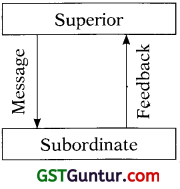
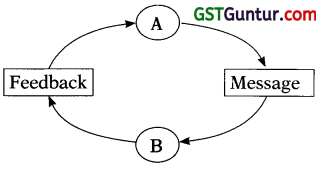

![]()
